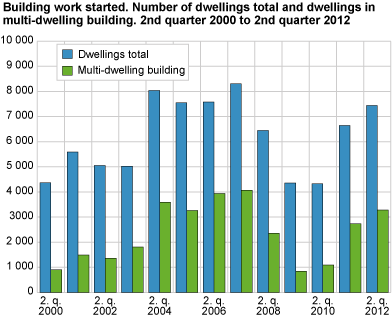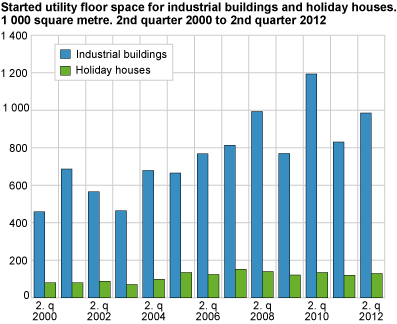Content
Published:
This is an archived release.
Increase in building activity in second quarter
In the second quarter of 2012, building was started on 7 439 dwellings with 1 041 000 square metres of utility floor space for dwellings. New dwellings increased by 12 per cent compared with the second quarter of 2011.
The increase in house building is greatest for flats, which went up by 543 dwellings compared with the same period in the previous year. Four out of 10 dwellings were flats. Statistics for new dwellings by building type show an increase in all groups except for row houses.
Increase in industrial sector
In the second quarter of 2012, building was started on 986 000 square metres of utility floor space within the industrial sector. This is an increase of 18.7 per cent. Building activity is especially high within offices and commercial buildings, with an increase of 74 000 square metres.
More figures are available in StatBank .
Registered building permissions
Figures for buildings in the building statistics rely on dates for when permits are registered by the municipality in the data register (Matrikkelen). A building permit does not always mean that construction will be started at once. Especially in low conjunctures it might be that construction projects are not realised, or may be postponed after a building permit has been granted. When the building activity trend turns from a low to a high level, and vice versa, this could affect the interpretation of the statistics.
More about comparability, quality and other information in "About the statistics" . |
Contact
-
Jens Mathiesen
E-mail: jens.mathiesen@ssb.no
tel.: (+47) 40 81 13 98
-
Magnus Espeland
E-mail: magnus.espeland@ssb.no
tel.: (+47) 45 27 40 08


